
This brainstorming sheet provides a brainstorming template for students.
- Subject:
- Science
- Material Type:
- Diagram/Illustration
- Provider:
- Reimagine Teaching
- Provider Set:
- The Leonardo
- Date Added:
- 11/13/2020

This brainstorming sheet provides a brainstorming template for students.
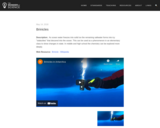
Science Phenomena: HS Physical Science - Energy - As ocean water freezes into solid ice the remaining saltwater forms into icy "stalactites" that descend into the ocean. This can be used as a phenomenon in an elementary class to show changes in state. In middle and high school the chemistry can be explored more deeply.

This interactive resource adapted from the National Park Service presents the key concepts of cave and karst systems, including how and where they form, different types, and various cave environments.

This video segment adapted from NASA describes the basic characteristics of our star, the Sun.

In this video segment adapted from NOVA, scientists are on the hunt for tornadoes. Using Doppler radar, they gather data in the hopes of solving the mystery of how tornadoes form.

A sheet of the Leonardo circuit cards.

A video demonstrating how to build a circuit flashlight.

A document containing photos of homemade circuits.

This classroom poster reminds students of three key questions to ask when evaluating information online: Who's behind the information? What's the evidence? What do other sources say? The file is designed to be printed on 18" by 24" paper. Note: A free educator account is required to access these materials.
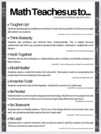
This is an 18x24 size poster that I have laminated in my classroom. This is all the 8 mathematical practices in teen friendly wording.
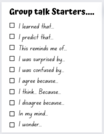
This printable is posted at all my whiteboard team stations. This is a great way to get students talking. Pushed heavily at the beginning of the year, and referenced throughout the year if groups are struggling with where to start.
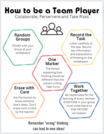
These are ways students are suggested to work together when at the Vertical Non Permanent surfaces (VNPS). This poster is hanging at each team whiteboard. These ideas are taken directly from BTC model (Building thinking classrooms)

To locate higher quality information, professional fact checkers practice the skill of click restraint: resisting the urge to automatically click on the first search engine result and instead scanning the results page to make an informed decision about where to click first. The click restraint classroom poster reminds students to practice this skill. Note: A free educator account is required to access these materials.
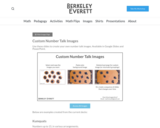
From ÒWhat do you notice? What do you wonder?Ó (the essence of doing mathematics) to ÒHow many/much?Ó (where students choose what to count and how to count it), images are a playful space to abstract the world around us, consider other peopleÕs perspectives, and build community.Use these slides to create your own number talk images. Available in Google Slides and PowerPoint.

This interactive resource adapted from the National Park Service describes the different kinds of sediments that make up coastlines, with a focus on the variety in color, size, and sorting.

This interactive resource adapted from the National Park Service describes the many forces that affect shorelines, including tides, weathering, erosion, and deposition.
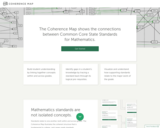
A visual map of the standards where each standard is linked both forwards and backwards to prior and future grades.

A color coded image of a QWERTY keyboard

This informational text explains the colorful phenomenon known as the northern lights (aurora borealis) and the southern lights (aurora australis). The text is written at a grade two through three reading level. This version is a full-color PDF that can be printed, cut and folded to form a book. Each book contains color photographs and illustrations.
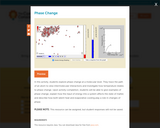
This interactive activity for grades 8-12 features eight models that explore atomic arrangements for gases, solids, and liquids. Highlight an atom and view its trajectory to see how the motion differs in each of the three primary phases. As the lesson progresses, students observe and manipulate differences in attractions among atoms in each state and experiment with adding energy to produce state changes. More advanced students can explore models of latent heat and evaporative cooling. This item is part of the Concord Consortium, a nonprofit research and development organization dedicated to transforming education through technology.